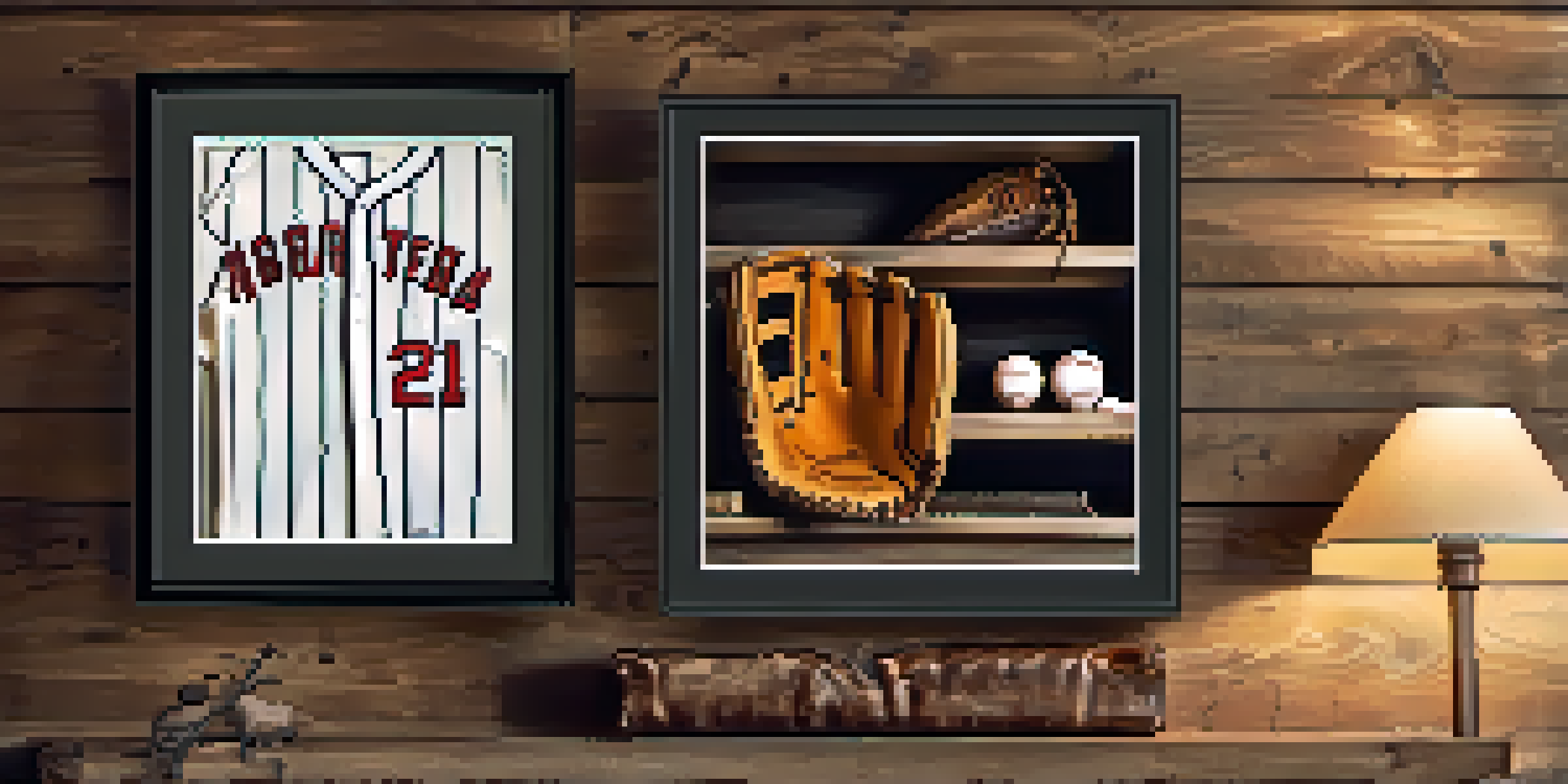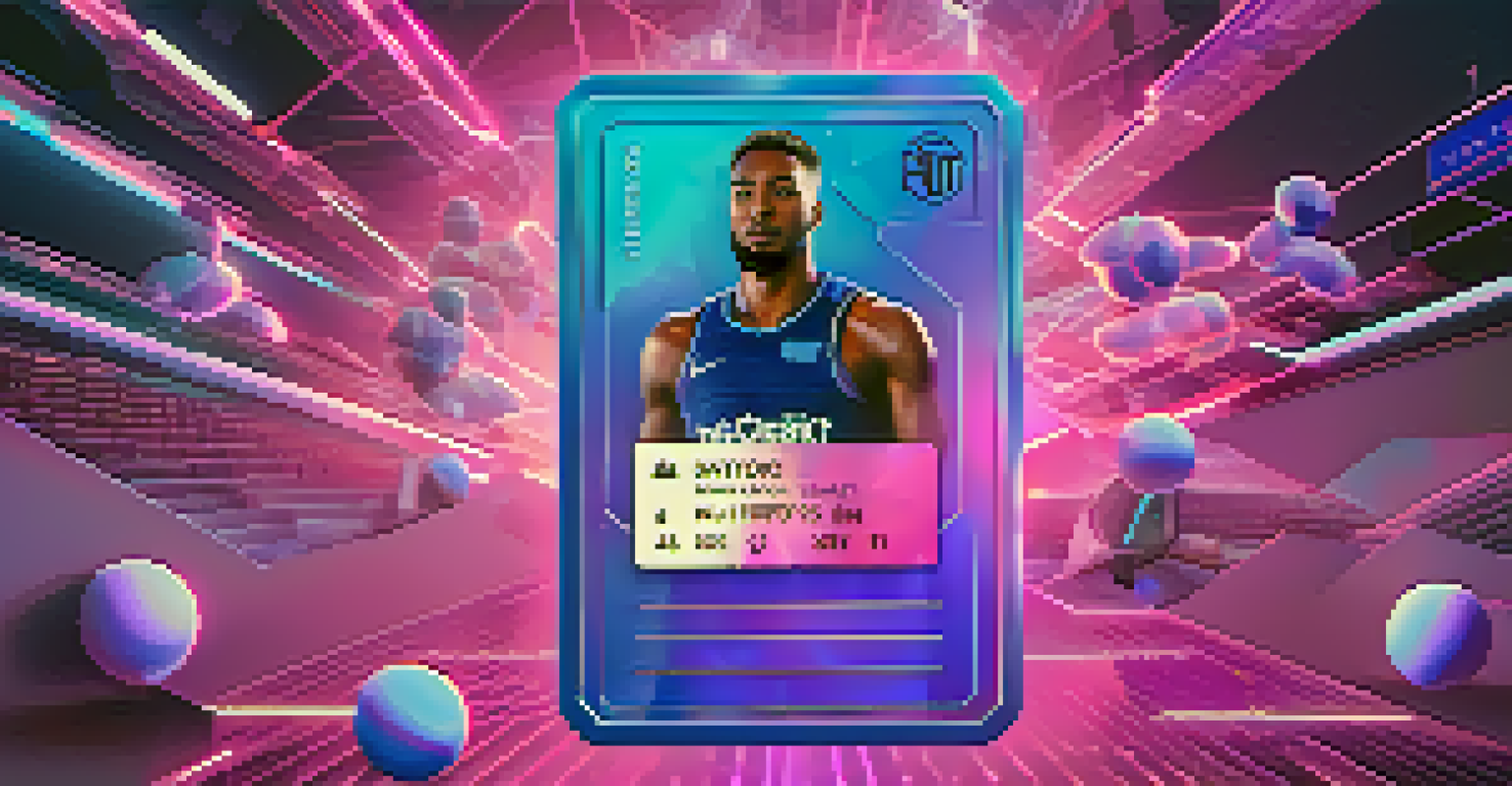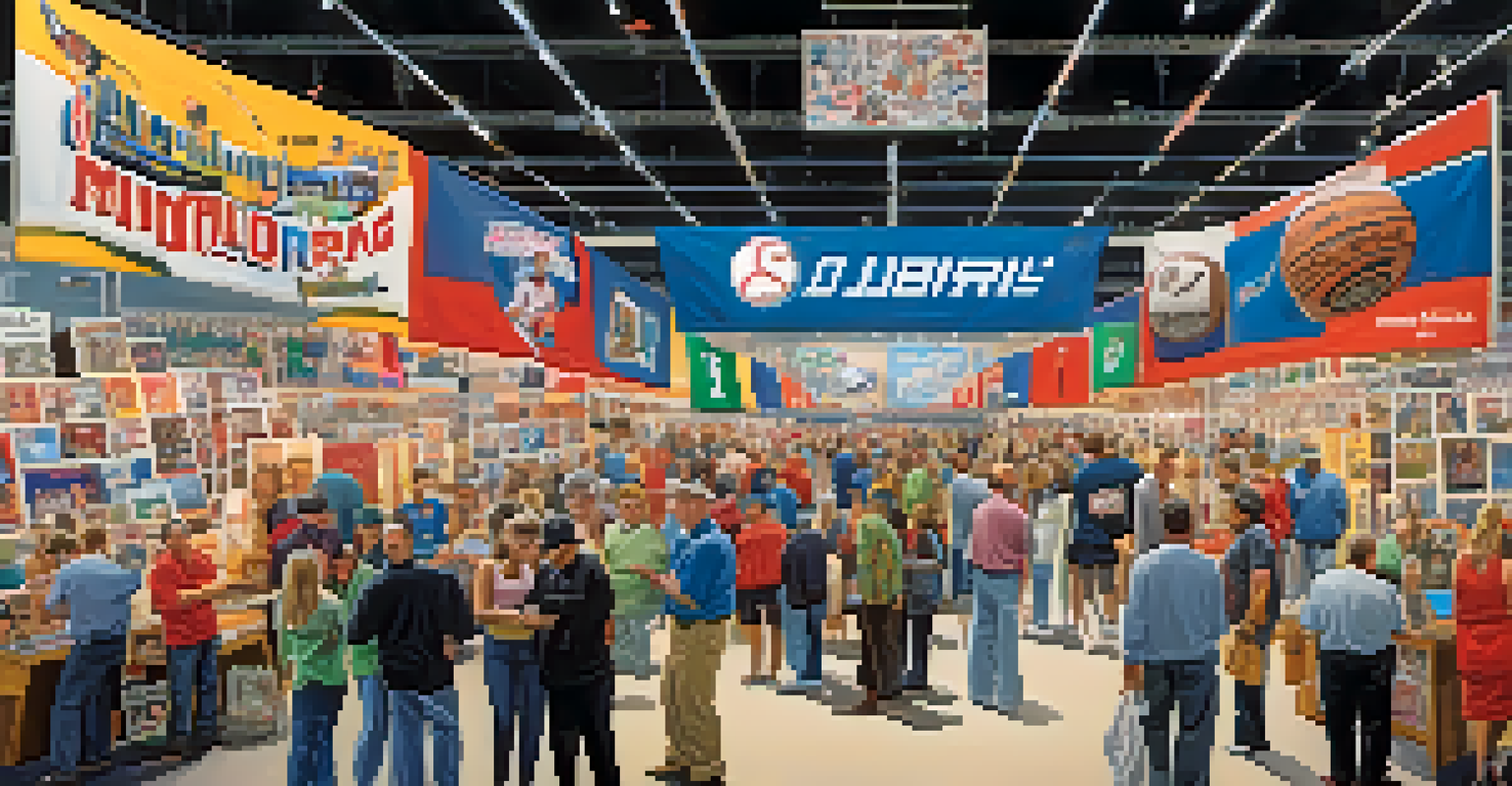The Future of Sports Memorabilia: NFTs vs. Physical Items

Understanding the Rise of Sports Memorabilia
Sports memorabilia has been a cherished part of fan culture for decades, with collectors seeking items that connect them to their favorite athletes. From vintage trading cards to signed jerseys, these physical collectibles hold sentimental and financial value. The growing popularity of sports memorabilia has created a vibrant market, allowing fans to engage with their passion in tangible ways.
Collecting is not just about ownership; it’s about connection and community.
However, the landscape is changing as technology advances. The introduction of digital assets, specifically non-fungible tokens (NFTs), is shaking up traditional collecting. NFTs offer a new way to own a piece of sports history, promising authenticity and uniqueness in a digital format.
This shift raises questions about the future of collecting. Will fans continue to prefer physical items, or will they embrace the digital revolution? Understanding this transformation is essential for both collectors and the sports industry.
What Are NFTs and How Do They Work?
NFTs, or non-fungible tokens, are unique digital assets verified using blockchain technology. Unlike cryptocurrencies such as Bitcoin, which are interchangeable, each NFT represents a distinct item, making it impossible to duplicate. This uniqueness is what makes NFTs appealing to collectors, as they can own a one-of-a-kind digital representation of their favorite sports moments.

For example, a digital highlight reel of a game-winning shot can be sold as an NFT, granting the buyer exclusive ownership rights. This concept has captured the interest of fans and investors alike, leading to multi-million dollar sales of digital collectibles. NFTs have transformed how we think about ownership in the sports world, merging technology with passion.
NFTs Transform Sports Collecting
The emergence of NFTs is revolutionizing how collectors engage with sports memorabilia, introducing unique digital assets that promise authenticity.
Yet, it’s crucial to understand that NFTs, while innovative, also come with their own set of challenges. Issues such as digital storage, market volatility, and environmental concerns surrounding blockchain technology are important considerations for potential buyers.
The Allure of Physical Memorabilia
Physical sports memorabilia holds a nostalgic charm that resonates with many collectors. The feeling of holding a signed baseball or a framed jersey brings a tangible connection to the athlete and their achievements. For many, these items tell a story, often passed down through generations, creating a personal bond that digital assets can't replicate.
In the world of collectibles, authenticity is everything.
Moreover, the market for physical items is well-established, with auction houses, expos, and conventions dedicated to the trade. Collectors often enjoy the thrill of hunting for rare finds or negotiating deals in person, adding an experiential layer to their hobby. This community aspect fosters a sense of belonging among fans, reinforcing the idea that collecting is not just about ownership but also about shared experiences.
Additionally, the investment potential of physical memorabilia remains strong, as certain items can appreciate significantly over time. Classic trading cards, for instance, have seen skyrocketing values, drawing in both seasoned collectors and newcomers looking to invest.
Comparing Value: NFTs vs. Physical Items
When it comes to value, both NFTs and physical memorabilia have their unique attributes. The market for NFTs can be highly volatile, with prices fluctuating wildly based on demand and trends. Some digital collectibles have sold for millions, but this value can vanish just as quickly, leaving buyers with uncertainty.
Conversely, physical items tend to have a more stable value, influenced by factors like rarity, condition, and historical significance. While they might not reach the same dizzying heights as some NFTs, their long-term potential is often more predictable. Collectors who prefer a more stable investment may gravitate towards physical memorabilia for this reason.
Physical Memorabilia Holds Nostalgia
Physical sports memorabilia evokes a sentimental connection for collectors, offering tangible items that carry personal stories and bonds.
Ultimately, the value of any collectible—digital or physical—depends on the collector's personal connection to the item. Whether it's a cherished memory or a passion for an athlete, the emotional value often outweighs the monetary aspect.
The Role of Authenticity in Collecting
Authenticity is a critical factor in the world of sports memorabilia, whether digital or physical. For physical items, collectors often rely on certificates of authenticity (COAs) and reputable appraisers to ensure they are purchasing genuine articles. This verification process can add layers of complexity and cost but is essential for maintaining trust in the market.
On the other hand, NFTs inherently offer a level of authenticity through blockchain technology. Each NFT comes with a digital certificate that verifies its uniqueness and ownership history, making it easier for buyers to ensure they are getting a legitimate item. This transparency can be reassuring in a market where forgery can undermine trust.
However, both forms of memorabilia face challenges regarding authenticity. For physical items, the risk of counterfeits remains high, while NFTs are susceptible to scams in the form of fake marketplaces. As collectors navigate these landscapes, understanding how to verify authenticity becomes paramount.
The Community Aspect of Collecting
Collecting sports memorabilia is as much about community as it is about the items themselves. Traditional collectors often find camaraderie at trade shows, online forums, and social media groups, where they can share stories, tips, and even trade items. This sense of belonging fosters a rich culture surrounding the hobby, deepening the connection fans have with their favorite sports.
In the NFT space, community also plays a vital role, albeit in a different way. Digital platforms often host forums and Discord channels where collectors can discuss their purchases, share advice, and connect over shared interests. The digital nature of NFTs allows for instant interaction, making it easier to build relationships with fellow collectors worldwide.
Future Blends Digital and Physical
The future of sports memorabilia is likely to be a hybrid model, where collectors embrace both NFTs and physical items to enhance their experience.
Regardless of whether one collects physical items or NFTs, the community aspect enhances the overall experience. It transforms collecting from a solitary pursuit into a shared journey, filled with friendships and mutual passion.
The Future of Sports Memorabilia: A Blended Approach
As we look ahead, it’s likely that the future of sports memorabilia will involve a blend of both NFTs and physical items. Collectors may gravitate towards a hybrid model, where digital assets complement traditional collectibles. This dual approach could cater to diverse preferences, allowing fans to enjoy the best of both worlds.
For instance, a collector might own a physical jersey signed by their favorite player and also possess an NFT representing a memorable moment from that player's career. This combination offers a multi-dimensional experience, enriching the connection fans have with their sports heroes.

Ultimately, the evolution of sports memorabilia will depend on how collectors adapt to changing technologies and market dynamics. While the debate between NFTs and physical items continues, the shared love of sports will remain at the heart of collecting.